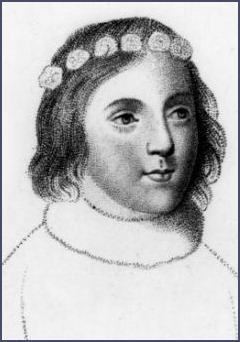Name Edward 17th | ||
 | ||
Father George Plantagenet, 1st Duke of Clarence Parents Isabel Neville, Duchess of Clarence, George Plantagenet, 1st Duke of Clarence Siblings Margaret Pole, Countess of Salisbury Cousins Perkin Warbeck, Elizabeth of York, Edward V of England, Cecily of York, Richard of Shrewsbury - Duke of Y Similar People George Plantagenet - 1st Duke, Richard of York - 3rd Duke of Y, Richard Neville - 16th Earl, Edward of Middleham - Prince of, Margaret Pole - Countess | ||
Edward Plantagenet, 17th Earl of Warwick (25 February 1475 – 28 November 1499) was the son of George Plantagenet, 1st Duke of Clarence, and a potential claimant to the English throne during the reigns of both Richard III (1483–1485) and his successor, Henry VII (1485–1509). He was also a younger brother of Margaret Pole, 8th Countess of Salisbury.
Contents
Life
He was born on 25 February 1475, at Warwick, the family home of his mother, the Duchess of Clarence, formerly Lady Isabel Neville, elder daughter of Richard Neville, 16th Earl of Warwick. He was created Earl of Warwick in 1478 shortly after the attainder and execution of his father for treason. His potential claim to the throne following the deposition of his cousin Edward V in 1483 was overlooked because of the argument that the attainder of his father also barred Warwick from the succession (although that could have been reversed by an Act of Parliament). Despite this, he was knighted at York by Richard III in September 1483.
In 1480, Warwick was made a ward of King Edward IV's stepson, Thomas Grey, 1st Marquess of Dorset, who as his guardian had the power to decide whom he would marry. Clements Markham, writing in 1906, claimed that Richard III had "liberated" Warwick from the Tower of London, where Dorset had placed him; however, there are no contemporary sources for this claim, although Dorset was Constable of the Tower. Dominic Mancini wrote that Richard, on becoming king, "gave orders that the son of the duke of Clarence, his other brother, then a boy of ten years old, should come to the city: and commanded that the lad should be kept in confinement in the household of his wife".
John Rous (died 1492) wrote that after the death of Richard III's only legitimate son, Edward of Middleham, Richard III named Warwick as heir to the throne; however, there is no other evidence for this, and historians have pointed out that it would be illogical for Richard to claim that Clarence's attainder barred Warwick from the throne while at the same time naming him as his heir.
Execution
After King Richard's death in 1485, Warwick, only ten years old, was kept as prisoner in the Tower of London by Henry VII. His claim, albeit tarnished, remained a potential threat to Henry, particularly after the appearance of the pretender Lambert Simnel in 1487. In 1490, he was confirmed in his title of Earl of Warwick despite his father's attainder (his claim to the earldom of Warwick being through his mother). But he remained a prisoner until 1499, when he became involved (willingly or unwillingly) in a plot to escape with Perkin Warbeck.
On 21 November 1499, Warwick appeared at Westminster for a trial before his peers, presided over by John de Vere, Earl of Oxford. He pleaded guilty. A week later, Warwick was beheaded for treason on Tower Hill. Henry VII paid for his body and head to be taken to Bisham Abbey in Berkshire for burial. It was thought at the time that Warwick was executed in response to pressure from Ferdinand II of Aragon and Isabella I of Castile, whose daughter, Catherine of Aragon, was to marry Henry's heir, Arthur. Catherine was said to feel very guilty about Warwick's death, and that her trials in later life were punishment for it.
A number of historians have claimed that Warwick had a mental disability. As Hazel Pierce points out, however, this surmise is based entirely on a statement by the chronicler Edward Hall that Warwick had been kept imprisoned for so long "out of all company of men, and sight of beasts, in so much that he could not discern a goose from a capon."
Upon Warwick's death, the House of Plantagenet became extinct in the legitimate male line. However, the surviving sons of his aunt Elizabeth, Duchess of Suffolk, continued to claim the throne for the Yorkist line.
